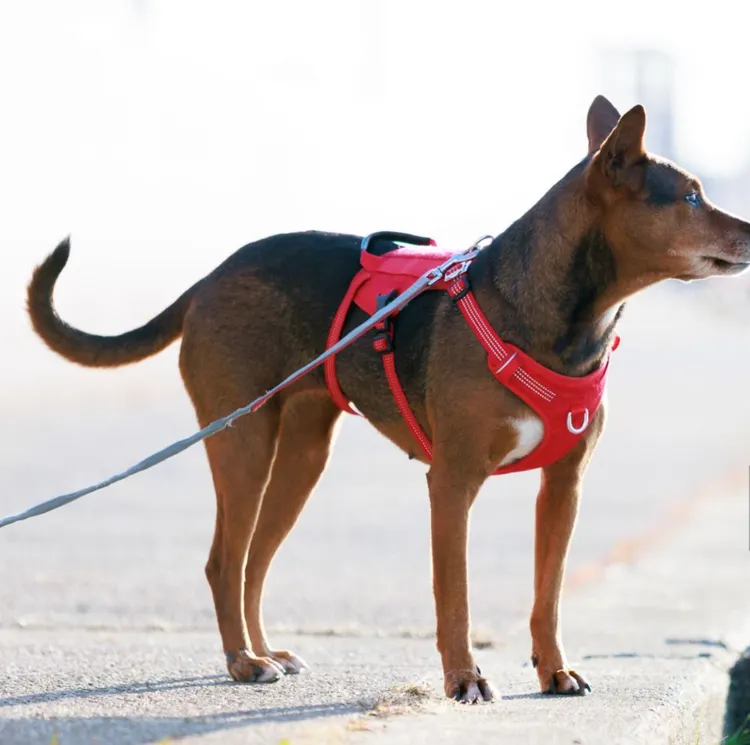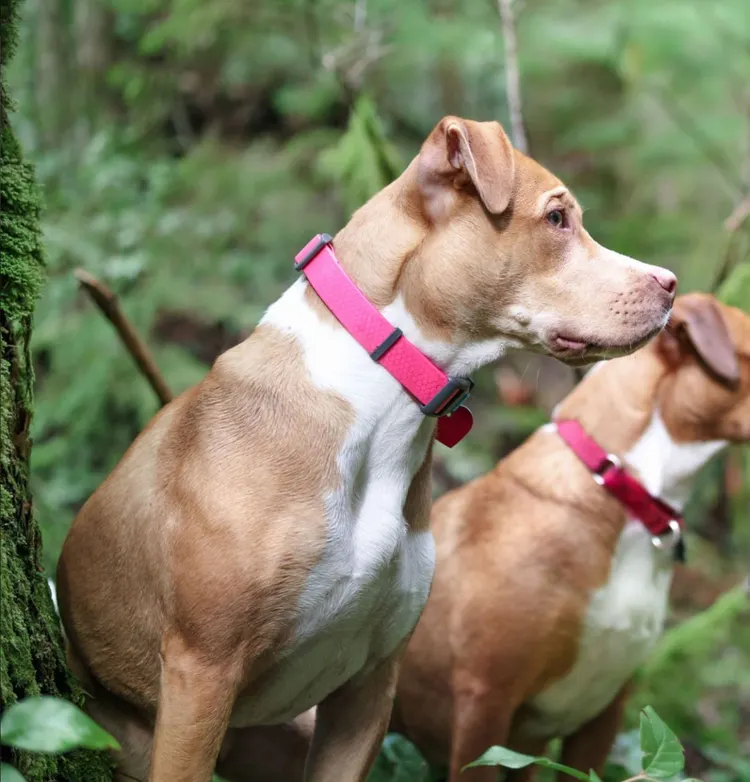Let’s be real, choosing the right dog collar isn’t just about aesthetics—it’s about comfort, safety, and functionality. Whether you’ve just brought home a new puppy or want to upgrade your dog’s current gear, one of the most crucial aspects is ensuring the collar fits just right. No one wants a collar that’s too tight or too loose. But how exactly do you measure a dog collar, and why does it matter so much?
In this post, we’ll take you through the process of measuring your dog for the perfect collar, offer tips on selecting the right material, and throw in a few eco-friendly pointers along the way!
Why Measuring Your Dog’s Collar Matters
Before we dive into the nitty-gritty of measurements, let’s talk about why getting the right collar size is so important.
- Safety First: A collar that’s too loose can slip off, especially if your dog is prone to pulling or has a habit of escaping. On the flip side, a collar that’s too tight can cause discomfort, restrict breathing, and even lead to injuries.
- Comfort and Mobility: Your dog should be able to move comfortably without the collar chafing their skin or rubbing their fur. A well-fitted collar also ensures they don’t feel restricted during their daily walks or playtime.
- Control and Training: If your dog wears a collar for training or leash walking, a snug yet comfortable fit gives you better control, making it easier to communicate with them during training sessions.
How to Measure Your Dog’s Neck for a Collar
Here’s where the magic happens! Measuring your dog’s neck properly ensures that you select the right collar size. You’ll need a flexible tape measure, or, in a pinch, you can use a piece of string and measure that with a ruler.
Step 1: Get the Dog Calm
Before measuring, ensure your dog is calm and relaxed. If your dog is wiggly, they might tense up, leading to inaccurate measurements.
Step 2: Measure Around the Base of the Neck
The key to measuring a collar is to measure the circumference of your dog’s neck where the collar will sit. Typically, the collar sits at the base of the neck, just above the shoulders. Wrap the tape measure (or string) around this area snugly but not tightly. If you can comfortably slide two fingers between the tape and your dog’s neck, you’ve got the correct fit.
Step 3: Add Two Inches to the Measurement
Once you have the neck measurement, add an additional 1-2 inches, depending on the size of your dog. For small dogs, adding one inch usually works, while for larger dogs, adding two inches ensures that the collar isn’t too tight. This gives you the extra room for comfort without making the collar too loose.
Step 4: Check the Size Range
Dog collars often come with adjustable ranges. After getting your dog’s neck size, make sure the collar you choose adjusts within that range. For example, if your dog’s neck measures 14 inches, look for a collar that adjusts from 12 to 16 inches.

Different Collar Types and Their Fits
Dog collars come in various designs, each with its own set of advantages and fitting methods. Here’s a breakdown of popular types and how to measure for each:
- Flat Collars: The most common type of dog collar, flat collars should fit snugly without digging into the skin. Measure as described above, and ensure you choose a collar that adjusts comfortably for everyday wear.
- Martingale Collars: Often used for dogs that tend to slip out of their collars, martingales have a tightening mechanism. To fit a martingale collar, you should measure both the neck and the widest part of the head, as the collar will need to slide over the head. Make sure it’s tight enough to prevent slipping but loose enough to be comfortable.
- Head Collars: While not exactly a traditional collar, head collars wrap around your dog’s muzzle and attach behind their ears. Measure the neck as usual, but also measure the circumference of your dog’s muzzle for a proper fit.
- Harnesses: If you’re thinking of going the harness route instead of a collar, you’ll still need to measure the neck but also include the chest girth (just behind the front legs). This ensures the harness fits snugly without putting pressure on the neck.
Eco-Friendly Collar Options
Now that you’ve mastered the art of measuring, it’s time to consider which collar material is best—not just for your dog, but also for the planet. Fortunately, there are plenty of eco-friendly options out there for conscientious pet owners!
- Hemp Collars: Hemp is a sustainable, durable material that’s naturally antibacterial and resistant to mold. Plus, it softens with wear, making it super comfy for your dog.
- Bamboo Fiber: Another great eco-friendly material, bamboo is fast-growing, biodegradable, and incredibly soft. Collars made from bamboo fiber are perfect for dogs with sensitive skin.
- Recycled Materials: Some companies make collars from recycled materials like plastic bottles or upcycled fabric. These are sturdy, stylish, and help reduce waste.
Choosing the Right Collar for Your Dog
While measurement is key, you also need to consider your dog’s personality and lifestyle when selecting a collar. Here are a few tips for finding the perfect match:
- For Active Dogs: If your dog loves running, swimming, and exploring, look for durable materials like nylon or waterproof collars. These hold up well in all conditions and are easy to clean.
- For Dogs with Sensitive Skin: If your dog tends to get irritated by certain materials, opt for softer, more natural fabrics like hemp or cotton. Some dogs also benefit from hypoallergenic collars.
- For Training: If you’re using a collar for training purposes, martingale collars offer more control without being too harsh. Just ensure you’re measuring the head and neck for the best fit.

Common Mistakes When Measuring for a Dog Collar
Even with the best intentions, mistakes can happen. Here are a few common measuring mishaps and how to avoid them:
- Not Adding Extra Room: It’s important to add that extra inch or two to your dog’s neck measurement. A collar that fits too snugly can cause chafing or restrict breathing.
- Wrong Collar Type for the Dog’s Size: Some collars, like martingales, work best for specific breeds or sizes. Make sure you’re choosing the right type of collar based on your dog’s needs.
- Inconsistent Measurements: If you use string to measure, double-check it with a ruler or tape measure to ensure accuracy. Small errors in measurement can result in an ill-fitting collar.
When to Adjust or Replace a Dog Collar
Your dog’s collar isn’t a one-size-fits-all-for-life deal. As your dog grows, gains or loses weight, or simply wears out their collar, it’s important to reassess the fit.
- Puppies: Growing puppies need regular collar adjustments. Check the fit every few weeks and make sure the collar isn’t getting too tight.
- Weight Fluctuations: If your dog has recently gained or lost weight, their collar may need resizing. Be sure to check the fit and adjust as needed.
- Wear and Tear: Collars endure a lot, from rolling in the dirt to everyday wear. Check your dog’s collar regularly for signs of fraying or damage, and replace it when necessary.



